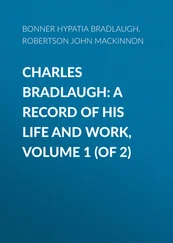Brad Stevens - Monte Hellman - His Life and Films
Здесь есть возможность читать онлайн «Brad Stevens - Monte Hellman - His Life and Films» весь текст электронной книги совершенно бесплатно (целиком полную версию без сокращений). В некоторых случаях можно слушать аудио, скачать через торрент в формате fb2 и присутствует краткое содержание. Год выпуска: 0101, Издательство: McFarland & Company, Жанр: Старинная литература, на английском языке. Описание произведения, (предисловие) а так же отзывы посетителей доступны на портале библиотеки ЛибКат.
- Название:Monte Hellman: His Life and Films
- Автор:
- Издательство:McFarland & Company
- Жанр:
- Год:0101
- ISBN:нет данных
- Рейтинг книги:4 / 5. Голосов: 1
-
Избранное:Добавить в избранное
- Отзывы:
-
Ваша оценка:
- 80
- 1
- 2
- 3
- 4
- 5
Monte Hellman: His Life and Films: краткое содержание, описание и аннотация
Предлагаем к чтению аннотацию, описание, краткое содержание или предисловие (зависит от того, что написал сам автор книги «Monte Hellman: His Life and Films»). Если вы не нашли необходимую информацию о книге — напишите в комментариях, мы постараемся отыскать её.
Monte Hellman: His Life and Films — читать онлайн бесплатно полную книгу (весь текст) целиком
Ниже представлен текст книги, разбитый по страницам. Система сохранения места последней прочитанной страницы, позволяет с удобством читать онлайн бесплатно книгу «Monte Hellman: His Life and Films», без необходимости каждый раз заново искать на чём Вы остановились. Поставьте закладку, и сможете в любой момент перейти на страницу, на которой закончили чтение.
Интервал:
Закладка:
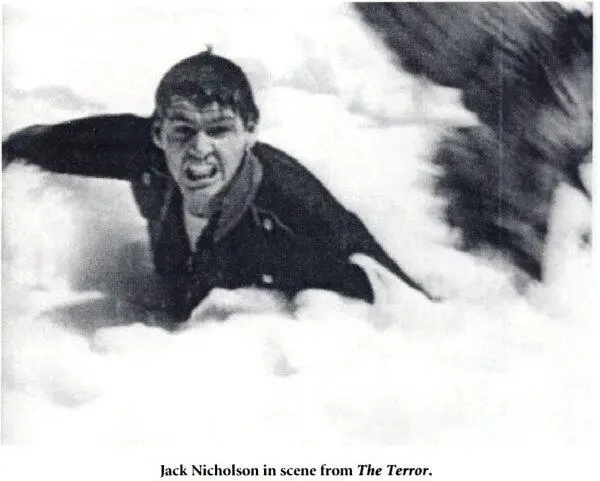
Alone among the project's three directors, Hellman treated the dream-like absence of logic that was a virtually inevitable by-product of the bizarre production history not as a liability to be overcome, but as potentially the film's greatest strength. Water plays a major role in Hellman's scenes (as it does in Corman's climax, where the castle is destroyed by a flood), being consistently associated with the supernatural: Andre's manner of riding along the sea's edge (like a character in a Mario Bava film) suggests a man existing between two worlds, and the major stages of his journey into a ghostly realm occur whenever he comes into contact with water. When Andre faints and falls from his horse, ocean water revives him (or, perhaps, signals his transition to a dream state), and it is immediately after this that he first glimpses Helene, the woman "from the sea." During her initial appearance, Helene appears to be floating on water, though she is simply standing on a rock in the ocean (a stunning image which manages to be mysteriously evocative while remaining completely logical), and water proves to be the first thing they discuss. Andre asks for drinking water, and Helene indicates a stream containing "clear water from the mountain" before leading him into a nearby forest so that he can see the fish swimming in a brook. 21The transition from rocky beach to verdant forest suggests that peaceful withdrawal from the turmoil of war with which Andre associates Helene, and Hellman's seemingly instinctual grasp of landscape's ability to convey an emotional state allows him to make the character's obsession a palpable reality (though it seems likely that Coppola directed the forest scene, its effectiveness is primarily a result of the context provided by Hellman). The following sequence, which almost certainly includes fragments of Coppola's work, 22uses purely cinematic means to communicate its essential points. The dream-like atmosphere is reinforced by a series of dissolves in which images ranging from the explicable (Andre following Helene along a narrow path) to the seemingly irrelevant (a pan from the bottom to the top of a tree) are briefly glimpsed, and a disturbingly discordant note is introduced by the abrupt cut from Andre chasing Helene across a beach to the same action viewed in extreme long shot. The sequence ends as Andre attempts to follow Helene into the sea, but is attacked by a hawk. Hellman recalls that "the hawk was 'flown' into the shot tied to the end of a fish line on a fishing pole."23
Coppola was responsible for the following scene, which begins as Andre wakes up in a cottage and sees someone he thinks is Helene, but is actually the witch Caterina, who denies there is a young woman in the area and insists that Helene is the name of her hawk. Gustav appears, and Caterina disdainfully notes "he brought you here." Andre soon falls asleep again. When he awakes, the cottage is empty except for the hawk, which devours a mouse and flies out the door. Andre puts on his cloak and follows.
The next section directed by Hellman starts here with a shot of the hawk flying through a dark forest. Following the bird, Andre discovers Helene sitting by a stream. Helene kisses Andre, then runs away without saying a word. As Andre attempts to pursue Helene, Gustav appears and throws a rock onto the ground. When the rock sinks (in a shot directed by Jack Hill), Andre realizes Helene had been trying to lead him into quicksand, though Gustav insists she is "possessed" and needs help. After telling Andre he will find Helene in "the castle of the Baron Von Leppe ... There is great danger. Find Eric. Eric knows," Gustav runs off. This sequence is memorable for the matched cuts juxtaposing Andre's movement with that of Caterina's hawk. If the bird and Helene are more obviously connected — they even share the same name — Andre's affinity with the supernatural is subtly implied by Hellman's precise use of camera movement and cutting (although he did not personally edit this footage, it was presumably assembled according to his intentions). Jack Hill recalls that "There was a scene where Jonathan Haze throws a rock to show where there is quicksand. Nobody could make that scene work. So, I dug a pit in my backyard and put a net in it so the rock wouldn't sink too fast. Well, that succeeded. When you don't have a studio behind you, you have to come up with these solutions." 24According to Hellman, "The quicksand idea was originally developed as a way to kill Jonathan Haze. When we decided to use the hawk clawing out his eyes instead, the quicksand was used briefly in the forest scene."25
A dissolve returns us to Coppola's footage. Back in the cottage, Andre sketches Helene while Caterina, who still insists "there is no girl," refuses to help him find the castle. Since Gustav has "gone away," Andre sets out on his own. One intriguing thing about this sequence is Andre's explanation of why he is interested in the Baron's castle: "The girl that I followed last night and spoke to, I believe that she lives there." By watching Jack Nicholson's lip movements, we can see that the line delivered on-set was "The girl that I followed last night and spoke to told me that she lived there." Since Gustav was mute in the scenes shot by Coppola, it is clear that this information was originally imparted to Andre by Helene (who remains silent throughout the forest scene shot later by Hellman).
The next scene, in which Andre is almost killed by falling rocks, is also by Coppola. Hellman directed the shots of Andre stopping by the sea, washing his face and looking up to catch his first glimpse of the castle. Just as the earlier encounter with water preceded Andre's initial view of Helene, so here it is after washing his face that he sees the Baron's home. The impression is of someone entering a realm that exists primarily as the embodiment of his own neuroses and desires, an effect heightened not only by the blatant use of mattes for shots of the castle, but by the preceding sequences, which established that Andre had no idea where the castle was located. Now, after coming into contact with the sea, he simply looks up and sees the object of his quest looming above him.
It is here, 19 minutes in, that we finally encounter the material Roger Corman shot late in 1962, which begins with Andre arriving at the castle, seeing Helene in an upstairs window, 26and meeting the Baron. Corman was responsible for a solid 18 minutes of skillfully realized footage showing Andre prowling the castle's corridors, investigating the outward markings of a trauma which is both the Baron's and his own. The sequences in the chapel appear to have been filmed during the final phase of production in 1963, since they refer to characters and plot elements (Eric and "the old woman") introduced during Coppola's stint. It is also likely that the scene in which Andre's horse bolts from the stable after seeing Helene was shot during this later period. 27
After the Baron admits to having killed his wife twenty years ago, another brief Hellman-directed sequence appears. We see Helene standing on a cliff staring out to sea. Gustav approaches and calls her "Lisa," a name Helene claims "sounds strange to me here by the sea ... my name is Helene. The old woman told me ... She summoned me here from the sea." Gustav demands she "Go back ... to the sea," but Helene says she will do so "Only when the sea enters the crypt. We shall rest there together, he and I, beneath the sea ... I must obey the old woman." After Andre tells Helene that "the Frenchman" can help her, Caterina's hawk appears, and Helene says, "The old one calls. She warns you, Gustav. Do not interfere. She has been patient with you long enough, but no more." This striking sequence again illustrates Hellman's sensitivity to landscape, his metaphysical concerns arising naturally from, but nevertheless transcending, the genre's traditional motifs. The overhead shots following Gustav's movement across the cliff (similar to those showing Martin struggling over the rocks in Last Woman on Earth ) convey a sense of great effort expended to little purpose, Helene's fixed stare at the sea placing the action within a context that renders all activity futile. The moment when Helene negotiates a change of position, obliging Gustav to occupy her former place within the frame while she moves into his, is curiously disturbing. If Hellman's protagonists assert a fundamental belief in their individuality, his narratives function as traps designed to erase the distinctions between characters and place their obsessions within a critical framework. Identity in Hellman is often doubled, halved, or in danger of being completely erased, and The Terror' s multiple exchanges—of which the cliff-top sequence stands as a visual correlative — anticipate Two-Lane Blacktop , in which G.T.O. alters his personality to reflect and accommodate his passengers.
Читать дальшеИнтервал:
Закладка:
Похожие книги на «Monte Hellman: His Life and Films»
Представляем Вашему вниманию похожие книги на «Monte Hellman: His Life and Films» списком для выбора. Мы отобрали схожую по названию и смыслу литературу в надежде предоставить читателям больше вариантов отыскать новые, интересные, ещё непрочитанные произведения.
Обсуждение, отзывы о книге «Monte Hellman: His Life and Films» и просто собственные мнения читателей. Оставьте ваши комментарии, напишите, что Вы думаете о произведении, его смысле или главных героях. Укажите что конкретно понравилось, а что нет, и почему Вы так считаете.

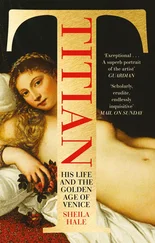
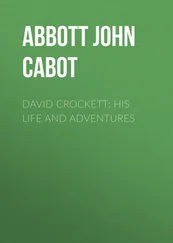
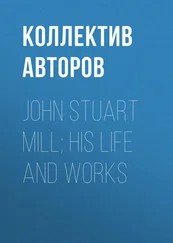
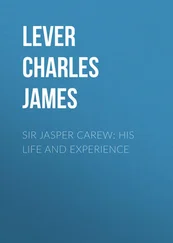
![William Frith - John Leech, His Life and Work. Vol. 1 [of 2]](/books/747171/william-frith-john-leech-his-life-and-work-vol-thumb.webp)

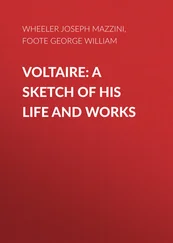
![William Frith - John Leech, His Life and Work, Vol. 2 [of 2]](/books/748201/william-frith-john-leech-his-life-and-work-vol-thumb.webp)
